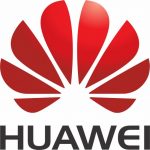 I was actually playing with DHCP relay and what I did find out is kind of interesting. For what is DHCP relay look for rfc3046 .
I was actually playing with DHCP relay and what I did find out is kind of interesting. For what is DHCP relay look for rfc3046 .
In short it is when the client sends a DHCP a broadcast message (discover) some device – usually the switch that is the client directly connected to – intercepts the packet and sends a unicast discover instead of it to remote server over L3. The advantage is that the amount of boadcasts in the networks drops and secondly the DHCP server can be in different subnet. This is great because you can now use centralised dhcp server for all networks.
Port isolate vs. Mac Forced Forwarding
 Let me first say that these two features are supposed to do very similar things – they are designed to separate access users so their traffic cannot go directly between them without any control. The firs possible solution is a port-isolate command which separates L2 and L3 traffic between the isolated (access) ports. This leads to complete separation with all the advantages and disadvantages. The biggest disadvantage is that all traffic trunked up to another switch where it will be dealt with – usually it will be routed. As the separation is also on L2 and L3 you cannot use arp proxy which could resolve the overhead on access switch. The advantage is that the separation is absolute which could be quite useful in ISP’s access networks.
Let me first say that these two features are supposed to do very similar things – they are designed to separate access users so their traffic cannot go directly between them without any control. The firs possible solution is a port-isolate command which separates L2 and L3 traffic between the isolated (access) ports. This leads to complete separation with all the advantages and disadvantages. The biggest disadvantage is that all traffic trunked up to another switch where it will be dealt with – usually it will be routed. As the separation is also on L2 and L3 you cannot use arp proxy which could resolve the overhead on access switch. The advantage is that the separation is absolute which could be quite useful in ISP’s access networks.
QoS on Huawei equipment – Custom Queunig
 After some time I have finally some energy to publish a bit more of some stuff about Huawei QoS. The following article will be concentrating on Custom Queuing as it is seen on VRP 3.40 on AR series routers (namely AR46 and AR28).
After some time I have finally some energy to publish a bit more of some stuff about Huawei QoS. The following article will be concentrating on Custom Queuing as it is seen on VRP 3.40 on AR series routers (namely AR46 and AR28).
